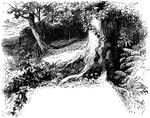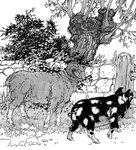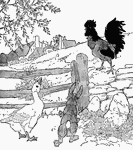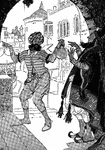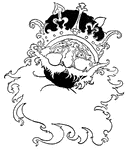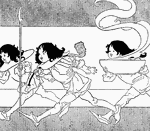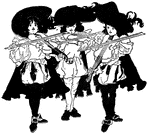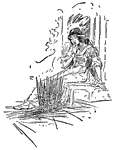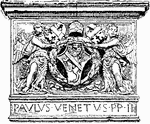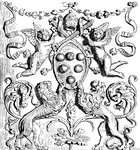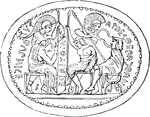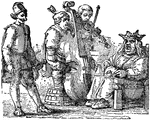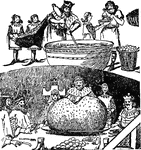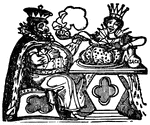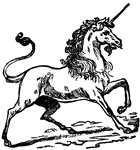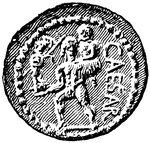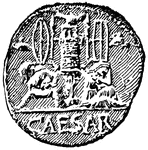
Shoe-Billed Stork
The Shoe-Billed Stork is a bird related to the Storks that feeds on creatures that live in muddy water.

Shoveler Duck
"The Shoveler is the broadbill or spoonbill duck, widely distributed over the Northern Hemisphere. Length…

Sphinx
"Sphinx is a Greek word signifying 'strangler,' applied to certain symbolical forms of Egyptian origin,…
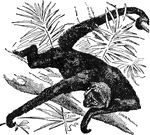
Spider Monkey
"Spider Monkey is a general name applied to many species of platyrhine or New World monkeys, distinguished…
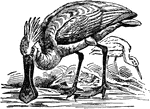
Spoonbill
"Spoonbill is the popular name of the birds of the genus Platalea, belonging to the heron family (Ardeidæ),…
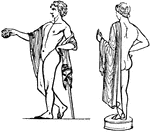
Chlamys
"A scarf, denoted an article of the amictus, or outer raiment of the Greeks. It was for the most part…
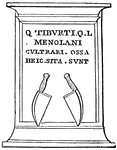
Culter
"A knife with only one edge, which formed a straight line. The blade was pointed, and its back curved.…

Drachma
"The principal silver coin among the Greeks. The two chief standards in the currencies of the Greek…

Drachma
"The principal silver coin among the Greeks. The two chief standards in the currencies of the Greek…

Exomis
"A dress which had only a sleeve for the left arm, leaving the right with the shoulder ad a part of…
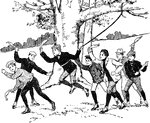
Sling the Monkey
"Sling the Monkey is a capital game, and can be played anywhere where there are trees. One player who…
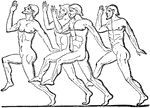
Foot-race
"The Olympic games were of greater efficacy than the Amphictyonic Council in promoting the spirit of…

Wrestling
"The Olympic games were of greater efficacy than the Amphictyonic Council in promoting the spirit of…
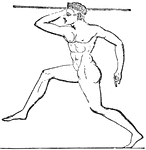
Hurling the javelin
"The Olympic games were of greater efficacy than the Amphictyonic Council in promoting the spirit of…

Boxing
"The Olympic games were of greater efficacy than the Amphictyonic Council in promoting the spirit of…

Tripod of Apollo
"It was the universal practice of the Greeks to undertake no matter of importance without first asking…
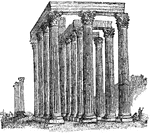
Temple of the Olympian Zeus
"Athens is said to have derrived its name from the prominence given to its worship of Athena by its…
!["Demosthenes had established himself as a public speaker before [the first Phillipic]; but it is chiefly in connection with Phillip that we are to view him as a statesman as well as an orator." — Smith, 1882](https://etc.usf.edu/clipart/16600/16602/demosthnbust_16602_mth.gif)
Bust of Demosthenes
"Demosthenes had established himself as a public speaker before [the first Phillipic]; but it is chiefly…

Aeneas and Ascanius
"The following cut, taken from one of Sir W. Hamilton's fictile vases, and representing Aeneas followed…

Temple of Jupiter
"The door in front of a temple, as it reeached nearly to the ceiling allowed the worshippers to view…
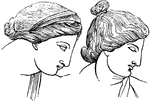
Venus and Diana
"Venus and Diana are generally represented with their hair dressed in the simple style of the young…
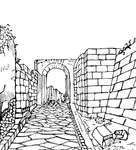
Pompeii
"The following cut gives a view of of a portion of the paved street at the entrance of Pompeii. The…
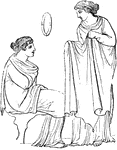
Peplus
"The peplus was a shawl which commonly formed part of the dress of females. It was often fastened…
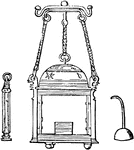
Laterna
"In later Greek, a lantern. Two bronze lanterns, constructed with nicety and skill, have been found…

Banqueting room
"The Roman people reclined at their meals. On each couch there were commonly three persons. They lay…
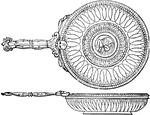
Patera
"The patera was a broad and comparatively shallow bowl used for libations, and also for drinking out…

Mobile tower
"They who are within this machine obtain first a view of the place from their high position, and then,…

Lorica
"A cuirass. The cuirass was worn by the heavy-armed infantry both among the Greeks and Romans. The soldiers…

Lorica
"A cuirass. The cuirass was worn by the heavy-armed infantry both among the Greeks and Romans. The soldiers…

Herculaneum
"In the following we have back and front views of the heads of statues from Herculaneum, on which we…

Olla
"A vessel of any material, round and plain, and having a wide mouth: a pot; a jar. The following woodcut…

Eye Muscles
The muscles of the eyeball, the view being taken from the outer side of the right orbit.
